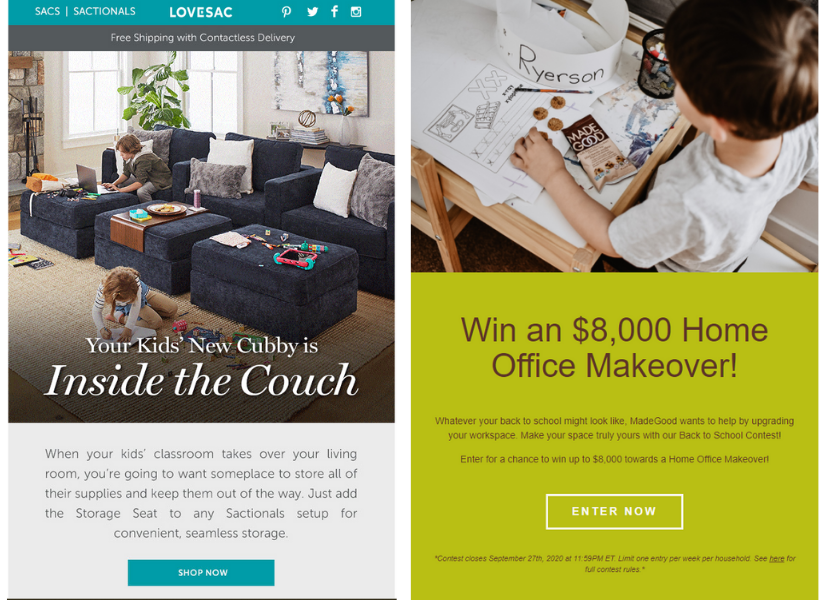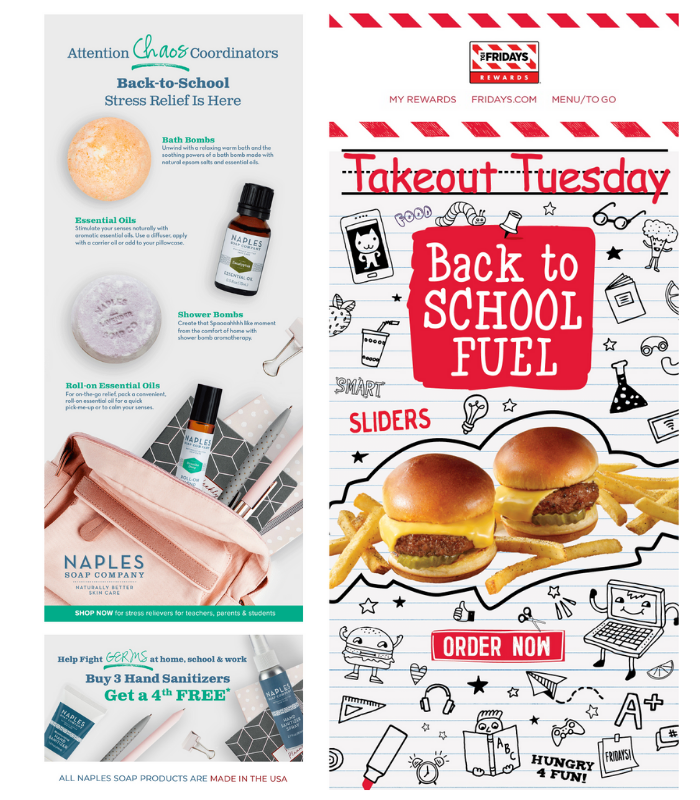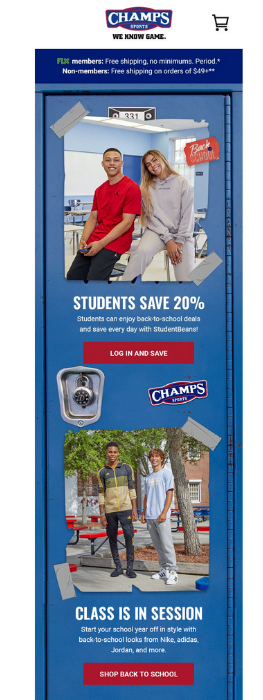Across the nation, teachers and students are returning to the classroom in person. After what was an arduous year and a half, communities are embracing in-person education even in the midst of the pandemic. Brands are acknowledging the return through their back-to-school email sends, and we’ve noticed a shift in who and how they’re approaching the season compared to last year.
Back-to-School Marketing in 2020
Last year, the emphasis among back-to-school retailers and brands was on at-home schooling to accommodate the many parents concerned about health and safety. Most brands took the approach of addressing remote learning, like LoveSac’s email from last year, or remaining completely location agnostic, like the MadeGood Foods email from last August.

Apparel and supply brands weren’t the only ones sending back-to-school emails. The pandemic allowed companies in industries outside of apparel, supplies, and electronics a chance to target parents shopping for the new school year. These emails, like the ones from Naples Soap Company and TGI Fridays, approached customers with an emphasis on convenience during a trying time.

As the first back-to-school season where parents had to shop for PPE and supplies to make remote learning comfortable, parents in fall 2020 collectively spent nearly $7 billion more than they did in 2019. A recent Deloitte study showed around $2 billion went toward coronavirus-related supplies for the 2020 school year. In many ways, 2020 was the guinea pig that prepared us for the shift in back-to-school marketing we’ve seen this year.
Back-to-School Marketing in 2021
The approach to back-to-school marketing this year has differed in a few ways from last year. Back-to-school brands have played off the vocal desire to return to in-person learning from politicians, school administrators, and parents across the nation.
Parents’ excitement to send their children back to school is reflected in the back-to-school email conversion rates—this year saw a 40% increase compared to the previous year. On average, families with K-12 students have spent $59 more than last year so far. Pandemic products and tech items saw an increase in spending compared to 2020, whereas there was a slight decrease in apparel shopping. This suggests parents were preparing for a hybrid in-person and remote school year and did not want to wait until the last minute for either scenario.

With the uncertainty of the school year ahead of us, parents continue to do what they do best—adapt to the circumstances presented and continue with what has worked in the past. Brands adjusted and positioned their products and services to begin a transition back to the new normal.

 (
(